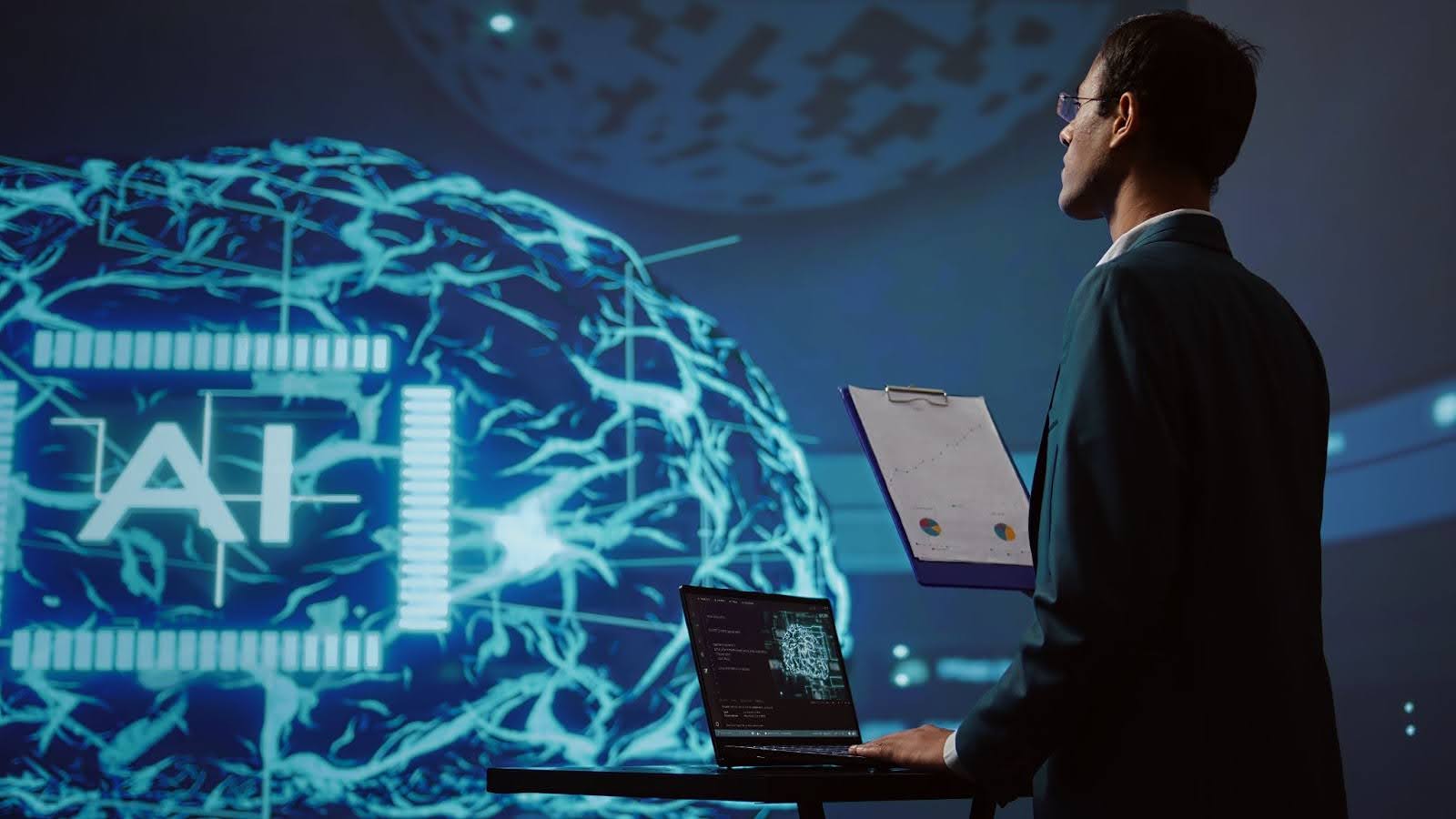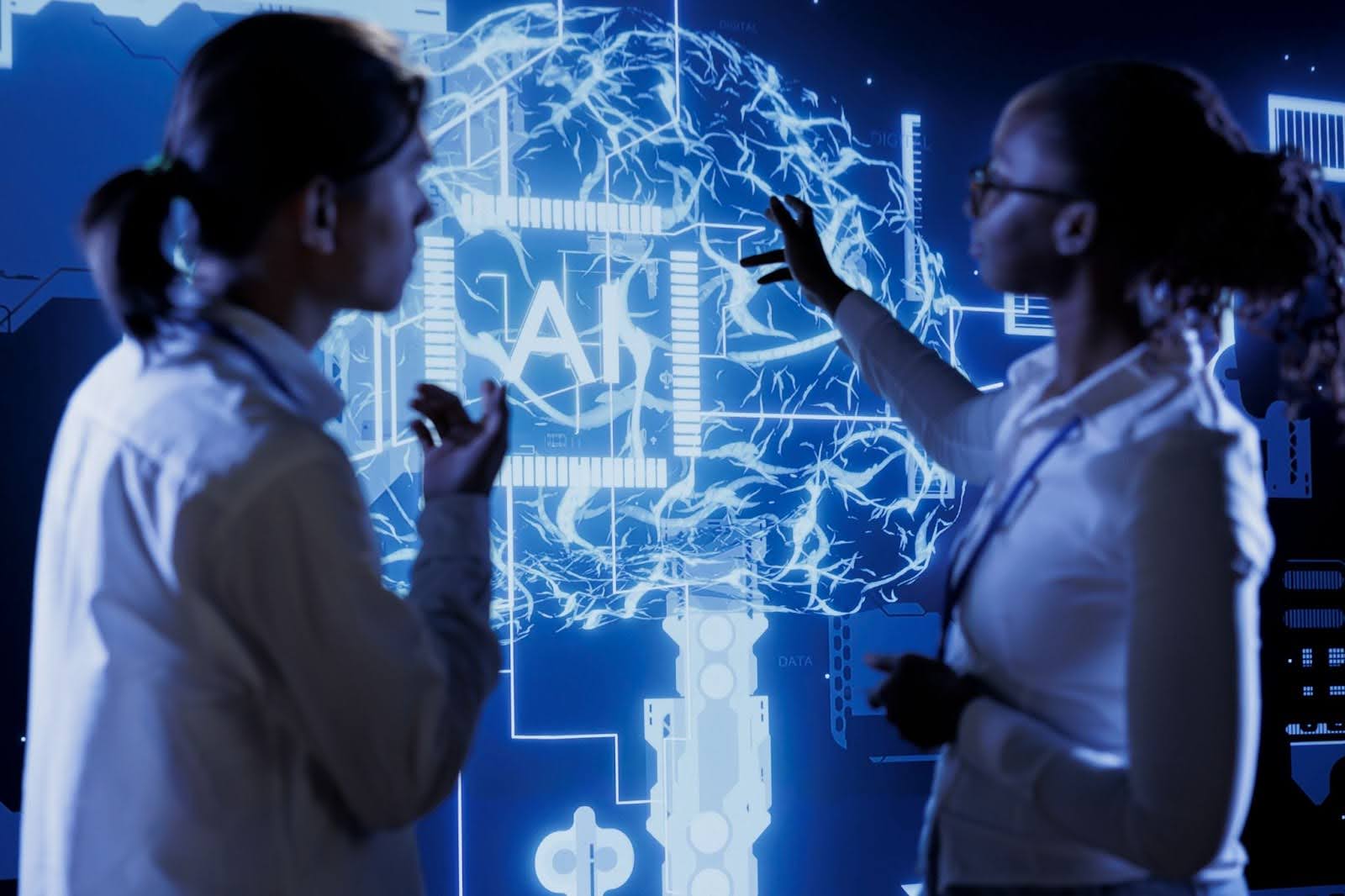Table Of Contents
Generative AI works by using machine learning models to learn patterns from large datasets and create new content based on those patterns. Technologies like transformers and GANs underpin these systems, enabling them to generate text, images, and more.
Quick Summary (TL;DR)
- What it is: AI that creates new content (text, images, code) rather than just analysing data
- How it works: Neural networks learn patterns from massive datasets and generate original outputs
- Key technologies: Transformers, GANs, and foundation models like GPT and DALL-E
- Applications: Content creation, software development, cybersecurity, healthcare, and business automation
Among recent innovations, generative artificial intelligence stands out for its transformative impact. This powerful technology has captured the public imagination and is reshaping industries at an unprecedented pace.
From creating art and writing content to powering advanced cybersecurity solutions and transforming healthcare, generative AI delivers impressive and varied results across multiple sectors.
This comprehensive guide will explore the inner workings of generative AI systems, examine real-world applications, and address common questions about this revolutionary technology.
The Foundations of Generative AI
1. What Is Generative AI?
Generative AI refers to artificial intelligence systems that can create new content—text, images, music, code, and more—that wasn't explicitly programmed. Unlike traditional AI, which relies on fixed rules to make predictions or classifications, generative models can create entirely new and original content that hasn't existed before.

2. The Core Principles Behind How Generative AI Works
At its heart, generative AI involves statistical pattern recognition on a massive scale. During training, these systems analyse vast datasets to identify patterns, structures, and relationships within the data. Once trained, they can generate new content that reflects those learned patterns.
The foundation typically involves neural networks—computational systems inspired by the human brain's architecture. These networks consist of interconnected nodes (neurons) organised in layers that process and transform input data through mathematical operations.
3. Foundation Models in Generative AI
Foundation models are large-scale AI systems trained on diverse datasets that serve as the basis for multiple applications. These models, like GPT (Generative Pre-trained Transformer) for language and DALL-E for images, represent a significant advancement in AI development.
Foundation models work by:
- Pre-training on enormous datasets (often containing billions or trillions of examples)
- Learning general representations of data through self-supervised learning
- Fine-tuning for specific downstream tasks
This approach has revolutionised generative AI by creating versatile systems that can be adapted to numerous purposes rather than building specialised models for each task.
The Technical Architecture: How Does Generative AI Work?
Neural Network Architectures
To understand how generative AI works from a technical perspective, we need to examine the prominent neural network architectures used in these systems:

1. Transformers
Transformers have become the dominant architecture for language-based generative AI. They are the key innovation in systems like ChatGPT, GPT-4, and Claude.
Transformers process all sequence elements simultaneously through a mechanism called "self-attention," allowing the model to weigh the importance of different parts of the input when generating each part of the output.
2. Generative Adversarial Networks (GANs)
Another approach involves GANs, which consist of two competing neural networks:
- A generator that creates candidate outputs
- A discriminator that evaluates those outputs against real examples
This adversarial process drives the generator to produce increasingly realistic results as it attempts to "fool" the discriminator. This architecture has been particularly successful in image generation.
3. Variational Autoencoders (VAEs)
VAEs represent yet another approach to generative AI. These models compress input data into a compact representation (encoding) and then reconstruct the output from this representation (decoding).
By adding probabilistic elements to this process, VAEs can generate diverse, novel outputs that share characteristics with the training data.
The Training Process
Modern generative AI typically follows these steps:
- Data Collection and Preparation: Assembling diverse, high-quality datasets relevant to the model's intended purpose
- Pre-training: Exposing the model to massive amounts of data so it can learn patterns and relationships
- Fine-tuning: Refining the model for specific applications or to align with human preferences
- Evaluation and Testing: Assessing performance, identifying biases, and ensuring output quality

Real-World Applications: How Generative AI Works in Practice
Understanding how generative AI works becomes clearer when examining its practical applications across various domains:
1. Content Creation and Creative Work
Generative AI systems can:
- Generate human-like text for articles, stories, and marketing copy
- Create original artwork and images based on text descriptions
- Compose music in various styles and genres
- Design new products, fashion items, and architectural concepts

The creative capabilities demonstrate how generative AI understands abstract concepts and aesthetic principles rather than just following explicit rules.
2. Software Development and Coding
In programming, generative AI assists developers by:
- Auto-completing code snippets and functions
- Debugging existing code and suggesting improvements
- Generating entire programmes from natural language descriptions
- Translating code between programming languages

These capabilities show how generative AI bridges the gap between human intent and technical implementation. Tools like GitHub Copilot and Replit are leading this transformation in software development. Explore how AI is transforming the future of software development in our latest blog.
3. Cybersecurity Applications
In the critical field of cybersecurity, generative AI applications include:
- Simulating potential attack scenarios to identify vulnerabilities
- Generating synthetic security data for training detection systems
- Automatically creating and testing security patches
- Improving threat detection through pattern recognition

Security professionals are discovering how generative AI works as both a potential threat vector and a powerful defensive tool. Companies like CrowdStrike and Darktrace are pioneering AI-powered security solutions. Discover key cybersecurity strategies every business should implement — and how RSVR’s tailored security solutions can support them.
4. Healthcare and Drug Discovery
In healthcare, generative AI advances medical research and patient care through:
- Generating potential molecular structures for new pharmaceutical compounds
- Creating synthetic medical data for research while preserving patient privacy
- Assisting in medical image analysis and diagnosis
- Personalising treatment plans based on individual patient data

These examples showcase how generative AI accelerates scientific discovery and improves healthcare outcomes. DeepMind's AlphaFold represents a breakthrough in protein structure prediction using AI.
5. Business and Enterprise Applications
For businesses, understanding how generative AI works has become essential for maintaining a competitive advantage. Applications include:
- Automating customer service through intelligent chatbots
- Generating personalised marketing content at scale
- Creating financial forecasts and scenario analyses
- Optimising supply chains and inventory management

The enterprise adoption demonstrates how generative AI transforms business operations and decision-making processes. Platforms like Salesforce Einstein and Microsoft Copilot are leading enterprise AI integration. Unlock business transformation with RSVR’s AI-powered solutions — explore our full range of services.
How Does Generative AI Work for Different Media Types?
How Does Generative AI Work for Text?
Text generation models like GPT-4 work by predicting the next word or token in a sequence based on all previous tokens. The process involves:
- Tokenising input text into smaller units (words, subwords, or characters)
- Processing these tokens through multiple transformer layers
- Generating probability distributions over possible following tokens
- Selecting tokens based on these probabilities and various sampling strategies

This approach enables models to produce coherent, contextually appropriate text across numerous domains and styles.
How Does Generative AI Work for Images?
Image generation typically follows one of several approaches:
- Text-to-image models like DALL-E and Midjourney translate textual descriptions into corresponding images
- Style transfer algorithms apply artistic styles to existing images
- GAN-based systems generate entirely new images from random noise
The ability to generate high-quality, original images demonstrates how generative AI understands visual concepts and their relationships to language.
How Does Generative AI Work for Audio and Video?
Audio and video generation involves specialised architectures that account for the temporal dimension of these media types. Systems can:
- Generate realistic speech from text
- Create music in specific genres or artists' styles
- Synthesise video footage of events that never occurred
- Convert between media types (e.g., describing images in text or generating images from text)
This cross-modal capability highlights how generative AI builds connections between different forms of data representation. ElevenLabs leads in AI voice synthesis, while Runway pioneers AI video generation.
Generative AI vs. Traditional AI
| Aspect | Traditional AI | Generative AI |
|---|---|---|
| Primary function | Classification, prediction | Creation of new content |
| Data requirements | Often works with smaller, structured datasets | Typically requires massive, diverse datasets |
| Architecture | Various (decision trees, simple neural networks, etc.) | Complex neural networks (transformers, GANs, etc.) |
| Output | Discrete predictions or classifications | Novel, original content |
| Human interaction | Often limited to specific inputs and outputs | Can engage in open-ended interactions |
This comparison clarifies how generative AI works differently from earlier AI paradigms, representing a fundamental shift in capabilities and applications.
Our Experience with Generative AI
At RSVR Tech, we've been at the forefront of implementing generative AI solutions for businesses across various industries. Our hands-on experience spans AI platforms in education, health, and astrology — some developed in-house, others crafted in collaboration with clients.
Real-World Implementation: AI Handles the Admin, Artists Do the Art
One of our standout projects demonstrates the practical power of generative AI in creative industries. We developed an AI-powered platform that eliminates the administrative burden for artists, allowing them to focus on what they do best — creating.
The Challenge: Artists were spending countless hours on paperwork, client communications, and administrative tasks instead of creating art.
Our Solution: We implemented intelligent automation that handles:
- Client inquiry processing and responses
- Project scheduling and timeline management
- Contract generation and modification
- Payment processing and invoicing
- Progress reporting and client updates
The Result: Artists reported saving 15+ hours per week on administrative tasks, leading to increased creative output and higher client satisfaction. No forms, no overthinking — just more time for the creative work that matters.
This project showcases how generative AI works in practice: by understanding patterns in administrative workflows and generating contextually appropriate responses, schedules, and documents automatically.
Our AI Development Approach
Our implementation process leverages both established platforms and bespoke solutions:
- Discovery & Analysis: We assess your business needs and identify where AI solutions can create the most value
- Strategy & Design: We create a tailored implementation plan aligned with your business objectives
- Development & Integration: Our experienced team builds and integrates AI solutions into your existing systems
- Testing & Refinement: We rigorously test and optimise performance before launch
- Ongoing Support: We provide continuous monitoring and support to ensure sustainable success
We've successfully implemented AI chatbots, analytics platforms, automation tools, and GPT-powered features — all designed to remove friction, save time, and deliver measurable results.
Ready to harness the power of generative AI for your business? Explore our AI services and discover how we can help you implement practical, scalable AI solutions that drive real outcomes. Whether you're building from scratch or enhancing existing platforms, we bring the expertise and experience to make AI work for your specific needs.
The Future of Generative AI
As we continue to explore how generative AI works, several emerging trends point to future developments:
1. Multimodal Systems
Future generative AI will increasingly work with multiple types of data simultaneously—text, images, audio, video, and more—creating more integrated and versatile applications.

2. Human-AI Collaboration
Rather than replacing human creativity, generative AI is enabling new forms of collaboration where AI amplifies human capabilities rather than substituting for them.
3. Ethical Considerations and Governance
Key concerns include:
- Copyright and intellectual property questions
- Potential for misuse (deepfakes, misinformation)
- Bias and fairness in generated content
- Privacy implications of training data
4. Computational Efficiency
Current generative AI involves enormous computational resources. Future research will focus on making these systems more efficient and accessible.
Conclusion
The question "how does generative AI work?" involves complex interactions between mathematics, computer science, data, and domain knowledge. By exploring fundamental principles and examining real-world applications, we can appreciate both current capabilities and future potential.
As generative AI continues to evolve, it promises to transform how we create, communicate, and solve problems across virtually every industry. Whether you're a business leader, creative professional, developer, or curious observer, understanding how generative AI works will be increasingly valuable in navigating our AI-enhanced future.
Frequently Asked Questions (FAQs)
- Simulate attack scenarios and identify vulnerabilities
- Generate synthetic security data for training detection systems
- Automatically create and test security patches
- Improve threat detection through pattern recognition
- Generate security reports and automate incident response workflows
Think of it like a student who has read thousands of books and can now write an essay in a similar style, but on a much larger scale.
- Mathematics: Matrix multiplications, probability distributions, and optimisation algorithms
- Computational resources: Processing vast amounts of data through complex neural networks
- Engineering: Efficiently implementing these systems on specialised hardware
- Feedback mechanisms: Continuous improvement through various learning techniques
- Processes your request to understand the topic and format
- Activates knowledge about poetic structures and autumn-related concepts
- Generates text that combines these elements coherently
- Refines the output to maintain consistency and quality
Image Generation Example: When using DALL-E to create "a surrealist painting of a cat playing chess," the system:
- Analyses the prompt to identify key elements (cat, chess, surrealist style)
- Activates its understanding of these visual concepts
- Generates an image that combines these elements
- Refines details to ensure the result matches the prompt




